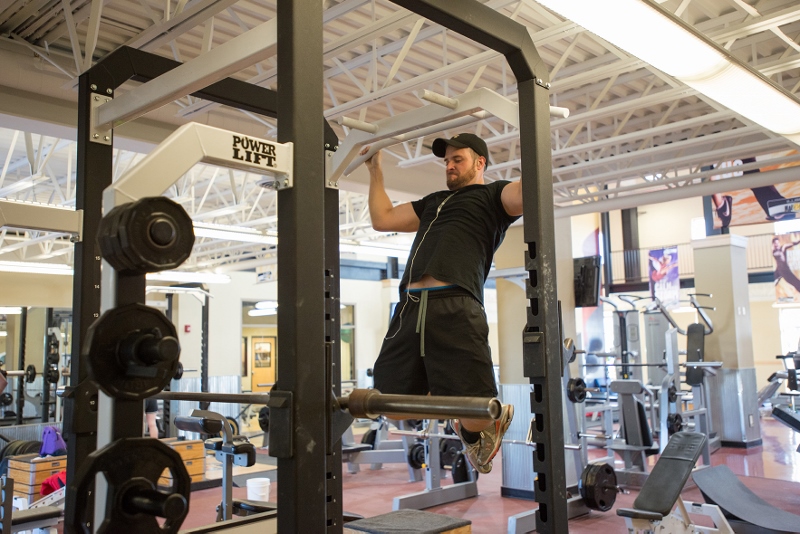It can be challenging to pick which exercises to perform and how to program your workouts in the gym. We hope these tips will give you some clarity on the important things to focus on with strength training and allows your time and effort to be spent more effectively when working out.
1) Move optimally
Before jumping into a training program, I recommend an assessment by a qualified trainer or physical therapist. We can screen for any issues that may limit your progress or predispose you to injury.
2) Core training
This principle has been debated in the fitness industry for many years. Some say squats and deadlifts are all the core work you need. On the other end of the continuum, you have people spending 45 minutes doing pelvic tilts and wondering why they aren’t achieving results. My advice is to spend a few minutes as part of your warm-up developing core stability. It will help prevent low back pain and act as the foundation to move more weight with your big exercises.
3) Warm-up (correctives/mobility work/hip and shoulder activation)
Along with spending a few minutes on core stability, I recommend addressing some pertinent mobility and activation work before jumping into your big movement patterns. A good rule of thumb is to focus on drills that will prepare your body for the exercises you plan to perform in that workout. For example, if you are squatting that day, it may be beneficial to perform some quick ankle, hip and thoracic spine mobility work, along with some band side steps and glute bridges. Again, don’t beat these exercises to death, they are there to help prepare the body for the big movements of the day.
4) Focus on big compound exercises
The goals of the first three on this list all lead to the main exercises in the gym. These exercises are what should make up the foundation of your training program. By working many big muscles with each lift, you are able to burn more calories during your workout and increase your metabolism for many hours after due to the recovery process. One of the main goals I have with all of my training clients and patients is getting them efficient and strong with big compound exercises. This is where the magic of training and rehab happen. These exercises include squat and deadlift variations, lunge variations, along with horizontal and vertical pulling and pressing for the upper body.
5) Focus on your posterior chain
Many of the common dysfunctions and injuries I see as a physical therapist revolve from people neglecting the back side of their body. We tend to perform more pushing than pulling in both our upper and lower body. In addition, most of us sit all day which leads to increased stiffness in the front side of our body. To help minimize injuries while also performing and looking better, incorporate more hip dominant patterns and upper body pulling patterns into your training program.
6) Focus on getting strong
You don’t have to be a competitive powerlifter to benefit from added strength in the big movements. Adding strength on top of efficient movement is a great way to minimize injury risk and maintain mobility. Getting stronger with deadlifts, squatting, pressing, rows and pull-ups will also allow you to perform sets with more weight for higher reps when you are trying to gain muscle mass. Getting strong in big movement patterns should be a key focus of any training program.
7) Progressive overload
The concept of training is pretty simple. We are stressing the body and forcing it to adapt in a specific way. The changes your body makes will be directly correlated to the imposed demands you place on it. Want to get stronger? You better have a program that focuses on progressively adding more weight to the bar. Want to gain muscle mass? Your program better focus on getting stronger and include exercises that focus on time under tension and metabolic stress to the muscles. The main ways to progress your exercises are intensity (more weight on the bar), volume (amount of total work you perform), and shorter rest periods between sets. Utilize these different progression models to get the specific results you are looking for.
8) Consistency and Effort
If all else is equal, the person that trains four times per week will see better results than the person who trains one to two times per week. The nice thing about addressing numbers one through three above is that you will have a better chance of long-term success without nagging injuries creeping in. The lifting game is a long-term process that takes years to excel at, enjoy the ride and continually look to make small gains, they add up over time. Also, don’t forget that you must actually put some effort into this process. It’s great to train smart, but we must also train hard to get results.
9) Try a variety of exercises, rep/set schemes, rest periods
It’s pretty typical to focus on the lifts we are good at in the gym. Strong people lift like powerlifters, endurance athletes jog and lift lighter weights, bodybuilders focus on high reps and slow tempo, Olympic lifters focus on the Olympic lifts, and physical therapists do band work and stability exercises. If you are competing in any of these areas, it is a must to specialize, but if your goal is to perform better, look better, and feel better overall, then try to pull from all different aspects of training. If you only focus on the big three with powerlifting, you will be strong but maybe won’t move or look your best. If you are a runner, giving strength training a run for a while could be the best thing you do for your body. You will develop some strength, move more efficiently, and perhaps even improve your speed with running. Getting out of your comfort zone in the gym is a great way to develop some new skills and give your body the stimulus it needs to make new gains.
10) Nutrition
Nutrition isn’t specific to what you do in the gym but may be the biggest single player involved when it comes to making the gains you are striving for. There is an old quote that says you can’t out work a bad diet. Some even say that 80% of your gains/results will come from how you eat, while 20% from your training. If you do not have your nutrition plan dialed in, this may be the link that is holding back your progress.
///
Want to learn more about Personal Training, Health Coaching, Nutrition Coaching, TEAM Training, or Senior Fitness/Senior Personal Training at Performance Health & Fitness? Sign up for a FREE 30-Minute Strategy Session with a certified personal trainer and we'll help you find the resources and information needed to reach your personal goals.


